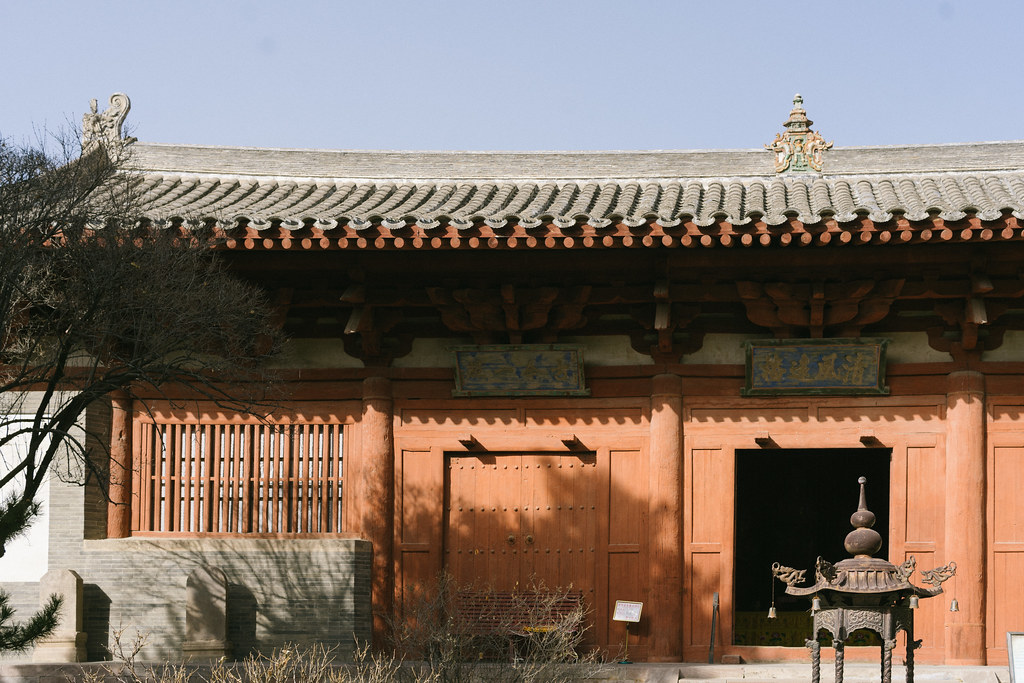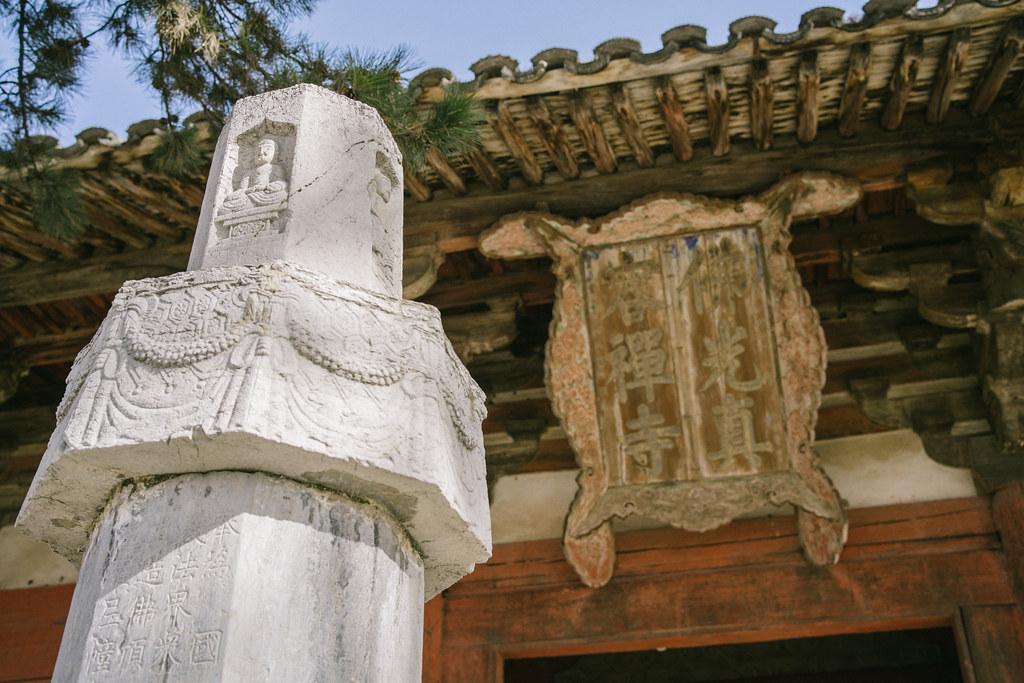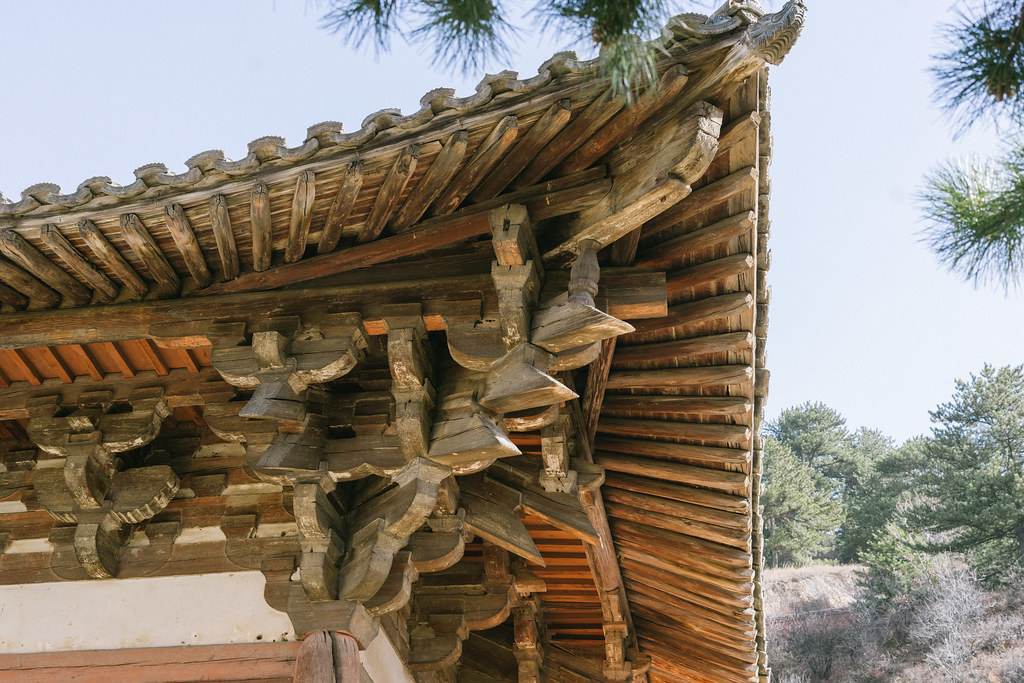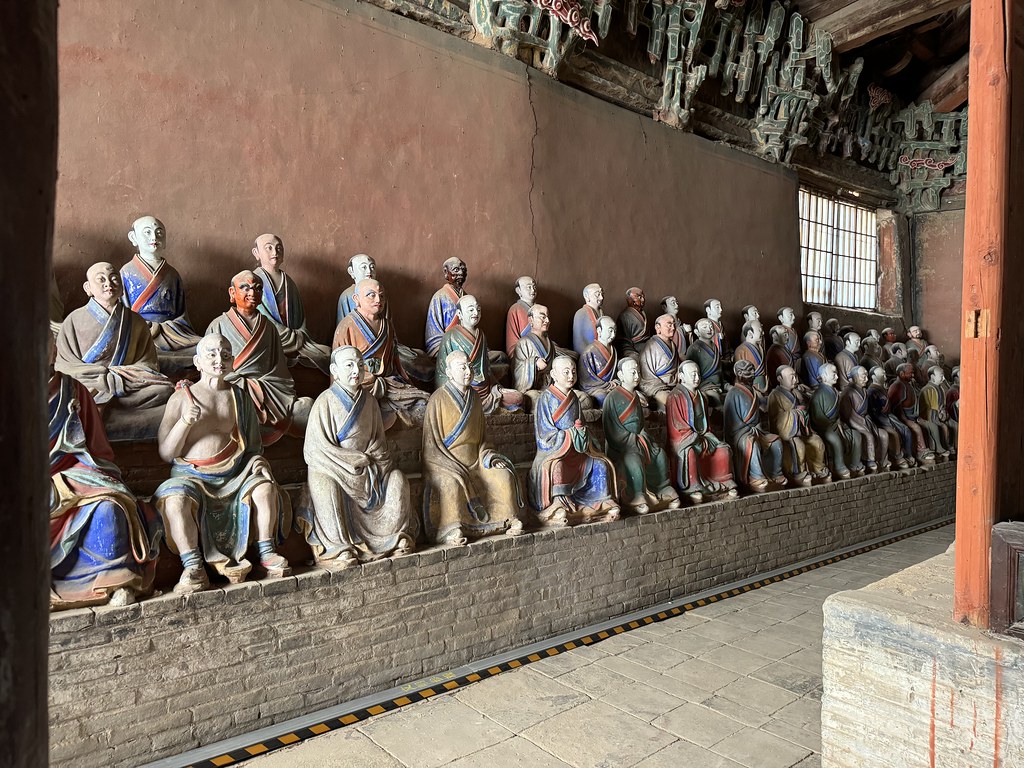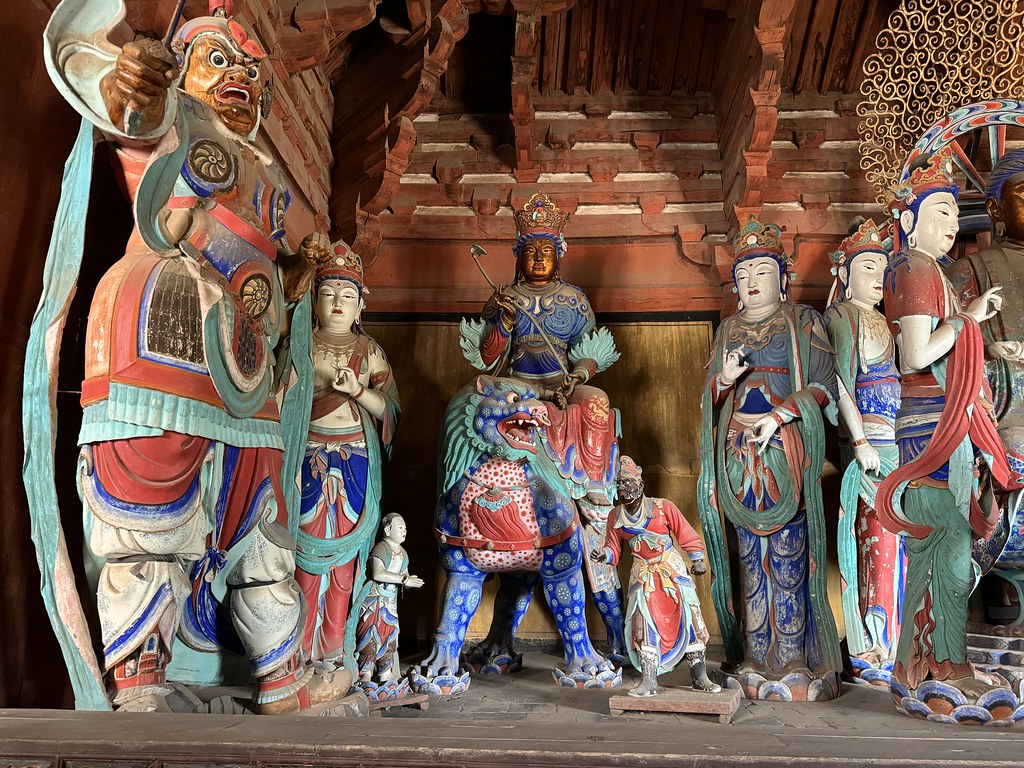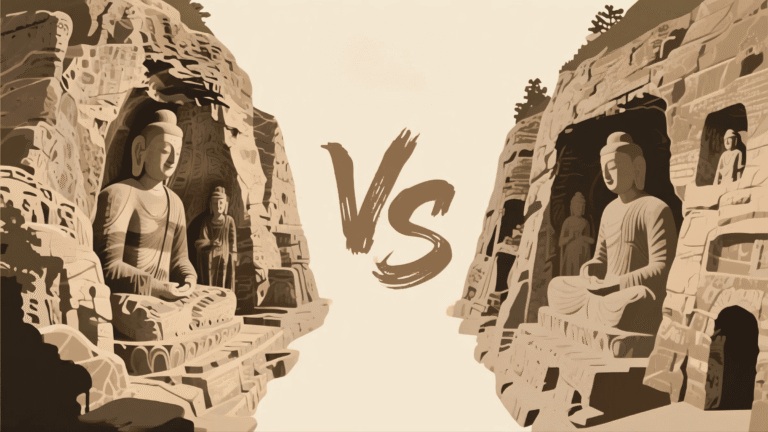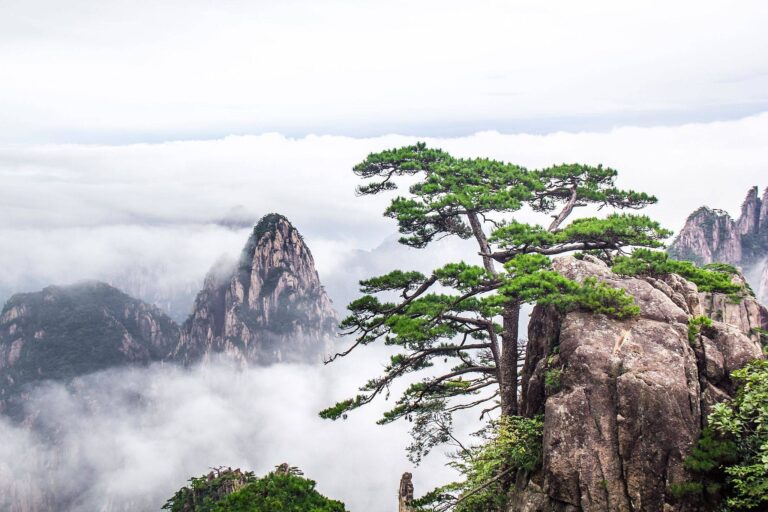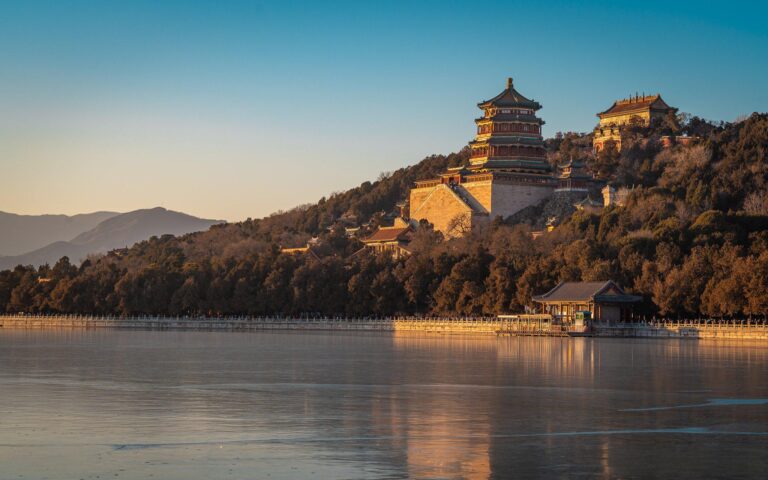Mount Wutai: A Pilgrim’s Guide to China’s Sacred Buddhist Mountain
Welcome to Mount Wutai. This is a place where faith carves the very landscape. It’s more than just a mountain; it’s a spiritual sanctuary. For centuries, emperors, monks, and pilgrims have journeyed here. They seek wisdom from Manjushri, the Bodhisattva of Wisdom, who is believed to reside here.
At Travel China With Me, we’ve walked these ancient paths. We have breathed the incense-filled air and listened to the monks’ morning chants. We are not just tour operators; we are storytellers and seasoned travelers. We want to share our deep connection to this sacred place with you. This guide is built from our own experiences and meticulous research. It’s designed to help you plan a journey that is both seamless and deeply meaningful.
Let’s explore the spiritual heart of China together.
Quick Facts
Chinese Name: 五台山 (Wǔtái Shān)
Location: Wutai County, Xinzhou City, Shanxi Province, China
Significance: The most prestigious of the Four Sacred Buddhist Mountains of China.
Patron Bodhisattva: Manjushri (文殊菩萨, Wénshū Púsà), the Bodhisattva of Wisdom.
UNESCO Status: Inscribed as a World Heritage Site in 2009 for its cultural landscape.
Number of Peaks: Five main peaks, giving it the name “Five-Terrace Mountain.”
Elevation: The North Terrace (Beitai Ding) is the highest point at 3,061 meters (10,043 ft).
Main Town: Taihuai Town, nestled in the central valley.
Active Temples: Home to over 50 monasteries, some dating back to the Tang Dynasty.
Table of Contents
History and Cultural Significance
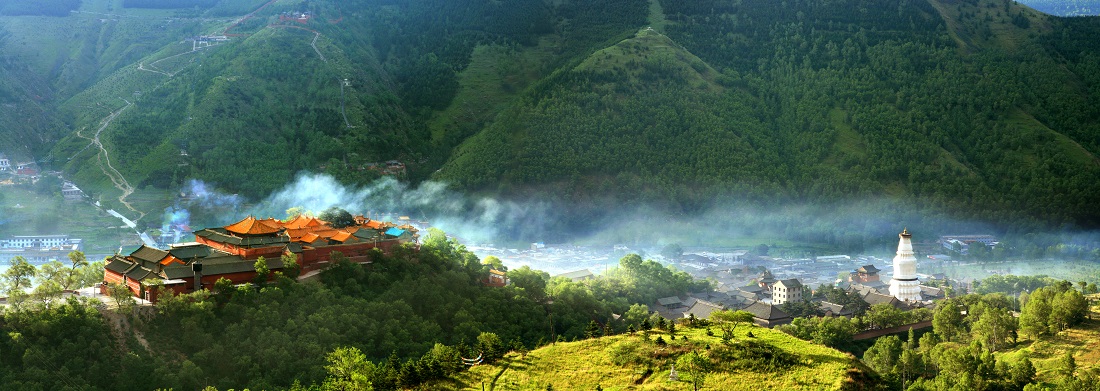
Mount Wutai’s story is as old as Chinese Buddhism itself. Its sacred history stretches back nearly two millennia. It is considered the first of China’s four sacred Buddhist mountains. This gives it a special status in the hearts of believers.
The Dwelling Place of Manjushri
The mountain’s soul is tied to Manjushri. He is one of the most important bodhisattvas in Mahayana Buddhism. Ancient scriptures, like the Avatamsaka Sutra, prophesied that Manjushri would reside on a “clear cold mountain” in the northeast. Scholars and monks identified this mountain as Wutai Shan.
This belief transformed the mountain. It became a premier pilgrimage destination. Pilgrims believe that a journey here can bring wisdom and enlightenment. They come to connect with Manjushri’s presence. Every stone and stream is thought to resonate with his energy.
An Imperial Mountain
Mount Wutai’s importance was not just religious. It was also political. Emperors from various dynasties, including the Tang, Yuan, Ming, and Qing, made pilgrimages here. They bestowed royal patronage upon its monasteries.
Emperor Kangxi of the Qing Dynasty visited five times. He left behind calligraphy and ordered temple restorations. This imperial favor helped preserve and expand the temple complexes. It also cemented Mount Wutai’s status as a national spiritual center. The mountain is a unique place where Han Chinese, Tibetan, and Mongolian Buddhist traditions coexist harmoniously.
A UNESCO World Heritage Site
In 2009, UNESCO recognized Mount Wutai as a World Heritage site. The designation was for its “cultural landscape.” This means that both its natural beauty and its man-made temples are protected. UNESCO noted that Mount Wutai’s temples are a catalog of Buddhist architecture. They showcase styles spanning over 1,000 years, from the Tang Dynasty to the Qing Dynasty. This is a living museum of faith, art, and history.
Why Is Mount Wutai Worth a Visit?

Travelers often ask us why they should choose Mount Wutai over other famous sites. The answer lies in its unique blend of spirituality, history, and nature. It’s a journey for the soul as much as it is for the eyes.
- Unrivaled Spiritual Atmosphere: This is not a tourist-trap replica. It’s a living, breathing center of Buddhist practice. You can hear the low hum of chanting monks. You can see devout pilgrims performing full-body prostrations. The air is thick with the scent of sandalwood incense. This authenticity is powerful and deeply moving.
- A Treasure Trove of Ancient Architecture: Mount Wutai hosts some of China’s oldest wooden buildings. The East Main Hall of Foguang Temple, built in 857 AD, is a national treasure. It has survived earthquakes and revolutions. Seeing these structures is like stepping back in time.
- Stunning Alpine Scenery: The mountain’s five flat-topped peaks offer breathtaking vistas. The landscape changes with the seasons. You’ll find lush green meadows in summer and a serene blanket of snow in winter. The high-altitude scenery is a beautiful backdrop for the ancient temples.
- A Tapestry of Cultures: Here, you can see Tibetan-style stupas next to traditional Chinese temple halls. Monks from different traditions study and practice together. This cultural fusion is rare and fascinating. It reflects the mountain’s long history as a crossroads of faith.
Highlights: The Must-See Temples and Peaks
With dozens of temples, it’s impossible to see everything in one trip. Based on our travels, we’ve curated a list of the most significant and spiritually resonant sites. These are the places that truly define the Mount Wutai experience.
Taihuai Town: The Heart of the Mountain
Most of your exploration will begin in Taihuai Town. This valley is the core of Mount Wutai. It is home to the highest concentration of monasteries.
Shuxiang Temple (Temple of the Special Image)
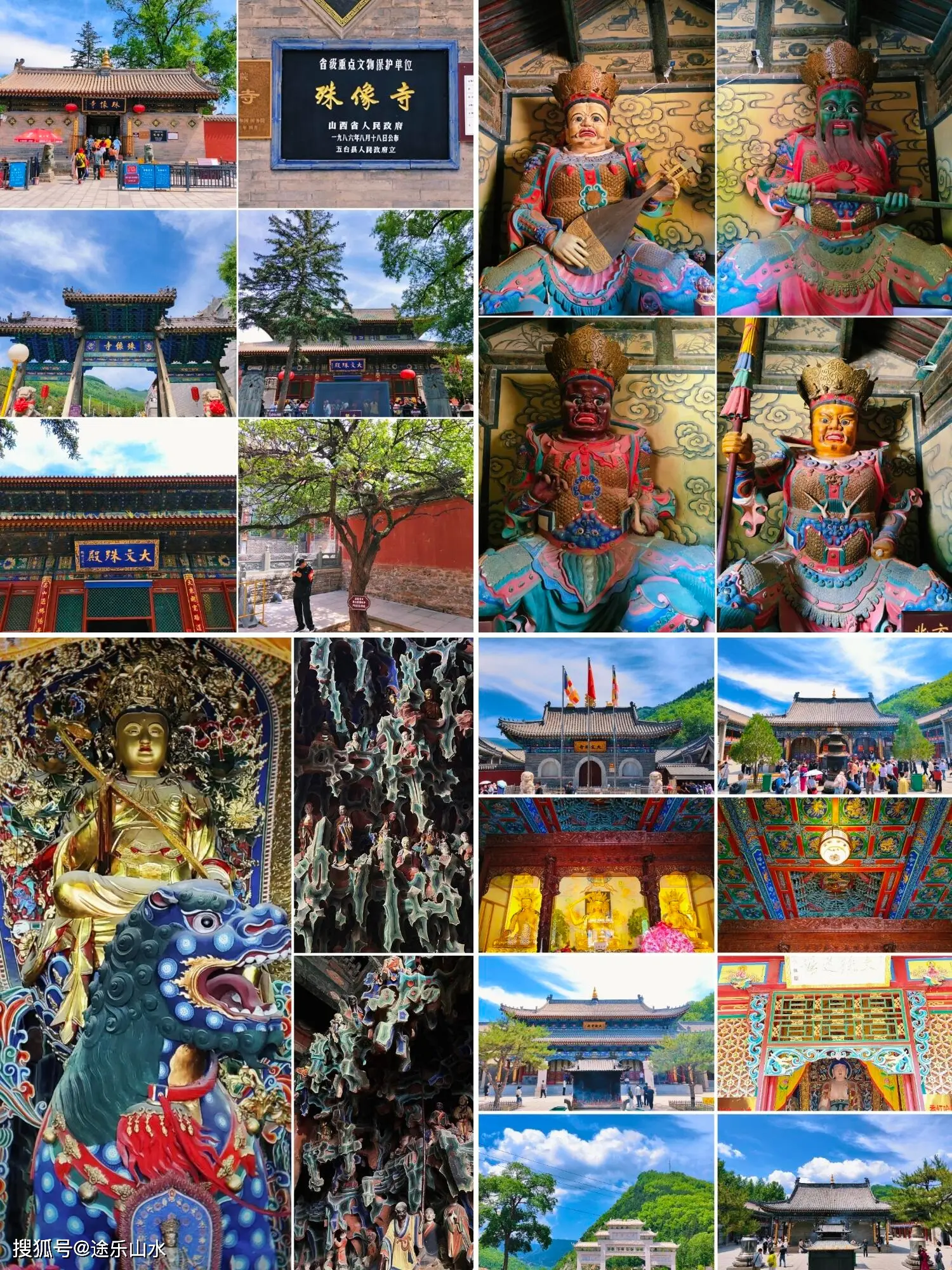
Just a short walk from the main cluster, you will find Shuxiang Temple. It may not have the towering pagodas of its neighbors, but it holds a singular treasure. This temple is home to what many consider the most realistic and remarkable statue of Manjushri on the entire mountain.
Inside the main hall, a giant, vividly colored clay statue depicts Manjushri riding a lion. The statue is over 10 meters high. What makes it truly special is its lifelike appearance. Legend says a humble monk had a true vision of Manjushri. He was so moved he sculpted this image based on his divine encounter.
Pay close attention to the details. The face of Manjushri is gentle yet wise. His lion mount is powerful and dynamic. It is a masterpiece of Ming Dynasty religious art. For many pilgrims, connecting with this particular image is a key part of their journey. We always make a point to visit, as it offers a different, more artistic form of devotion compared to the architectural grandeur of other temples. It is a must-see for anyone interested in Buddhist sculpture.
Tayuan Temple (Pagoda Yard Temple)
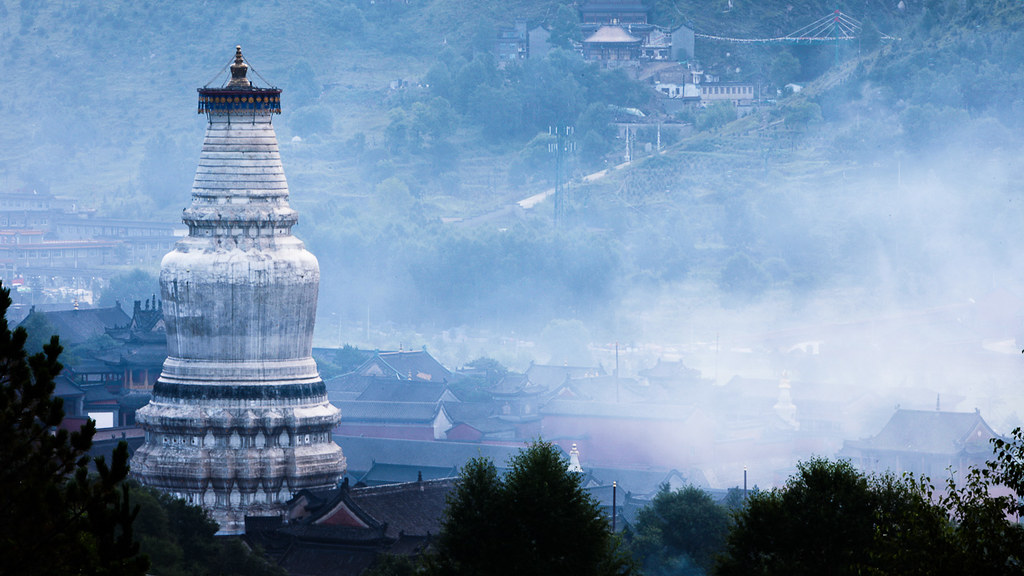
You can’t miss Tayuan Temple. Its massive white stupa is the iconic symbol of Mount Wutai. The stupa, built in the Tibetan style, is said to contain a hair of Manjushri. Circling this stupa (a practice known as kora) is a central ritual for pilgrims. We recommend walking around it at least three times in a clockwise direction. Join the lines of devout believers and feel the collective energy. It’s a simple yet profound experience.
Xiantong Temple
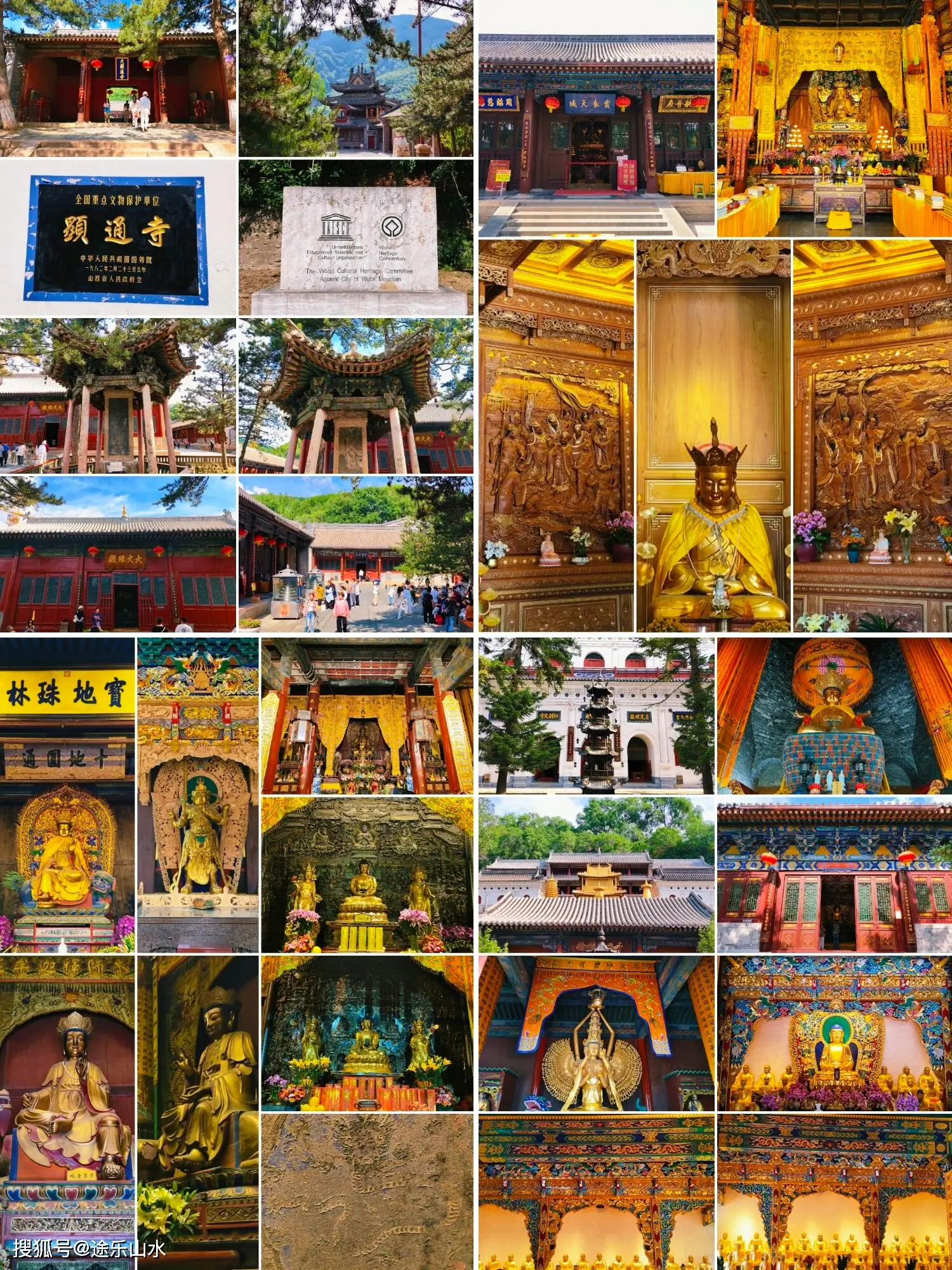
This is the oldest and largest temple complex on Mount Wutai. Founded in the 1st century, it feels like a city of temples. Its most remarkable structure is the Bronze Hall. The hall is cast entirely from bronze and contains 10,000 small Buddha figures. Standing inside feels like being enveloped in a world of devotion. It’s a testament to the incredible craftsmanship of the Ming Dynasty.
Pusading (Bodhisattva Summit)
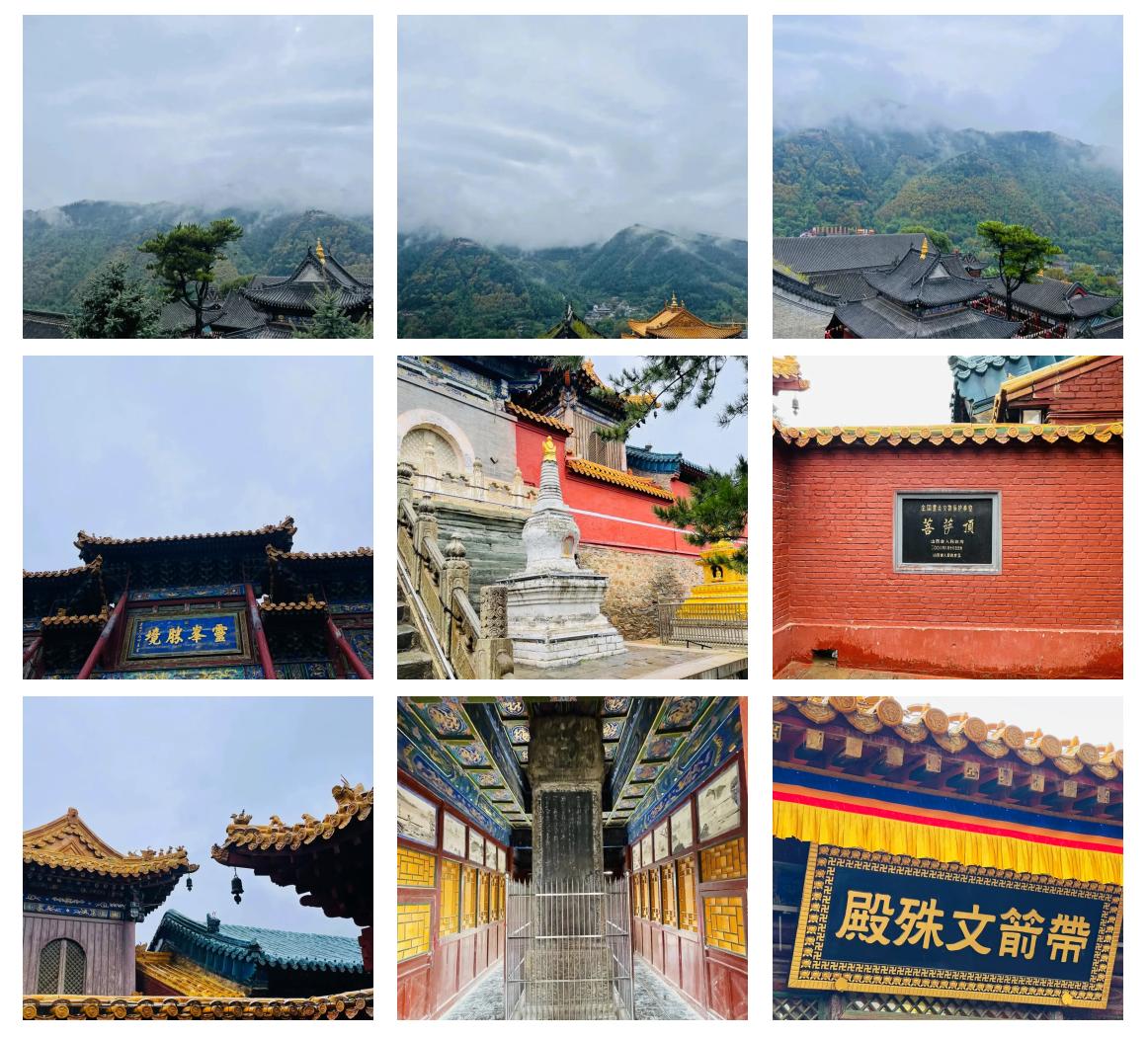
Perched on a hill overlooking Taihuai Town, Pusading is a former imperial monastery. Its yellow-tiled roofs signify its royal connection. This was the residence for visiting emperors. To reach the main gate, you must climb 108 steps. These steps represent the 108 worldly vexations in Buddhism. Climbing them is a symbolic act of purification. From the top, the view of the valley is magnificent.
The Five Great Terraces (The Five Peaks)
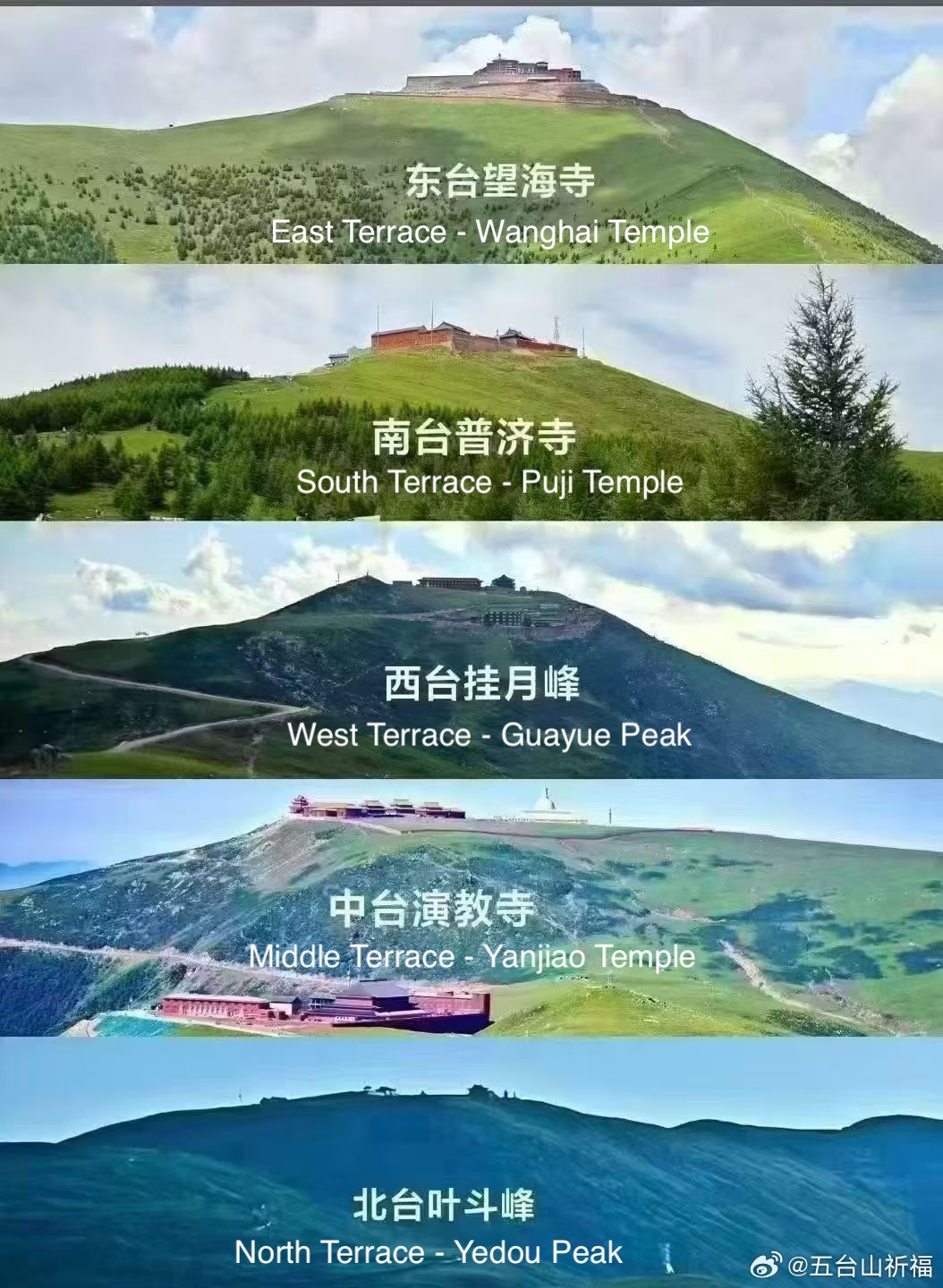
A full pilgrimage to Mount Wutai involves visiting all five of its peaks. Each peak is associated with a different manifestation of Manjushri. This journey is called the Da Chaotai (大朝台), or the Great Pilgrimage.
- East Terrace (Dōngtái): Known for its spectacular sunrises. It offers a panoramic view of the surrounding landscape.
- West Terrace (Xītái): Famous for its beautiful sunsets and fields of wildflowers in summer.
- South Terrace (Nántái): The easiest to access. It is known for its lush vegetation.
- North Terrace (Běitái): The highest point in Northern China at 3,061 meters. The air is thin, and the views are immense. It feels like you are on the roof of the world.
- Central Terrace (Zhōngtái): This peak is said to be the main abode of Manjushri. The temple here is dedicated to his “wisdom body.”
Hiking all five peaks is a challenging trek. It takes 2-3 days for most people. However, you can also hire a local jeep or use a combination of shuttle buses and walking to visit them.
Temples Outside the Core Area
Some of Mount Wutai’s greatest treasures lie outside the bustling Taihuai Town.
Foguang Temple (Temple of Buddha’s Light)
If you have a deep interest in history, you must visit Foguang Temple. It’s a bit of a drive from Taihuai, but it is absolutely worth it. Its East Main Hall is a miracle of preservation. Discovered in 1937 by the renowned architect Liang Sicheng, it is the third-oldest wooden building in China. Inside, you will find original Tang Dynasty statues and murals. Standing in this hall is a humbling experience. You are in the presence of 1,200 years of continuous history.
Nanshan Temple (South Mountain Temple)
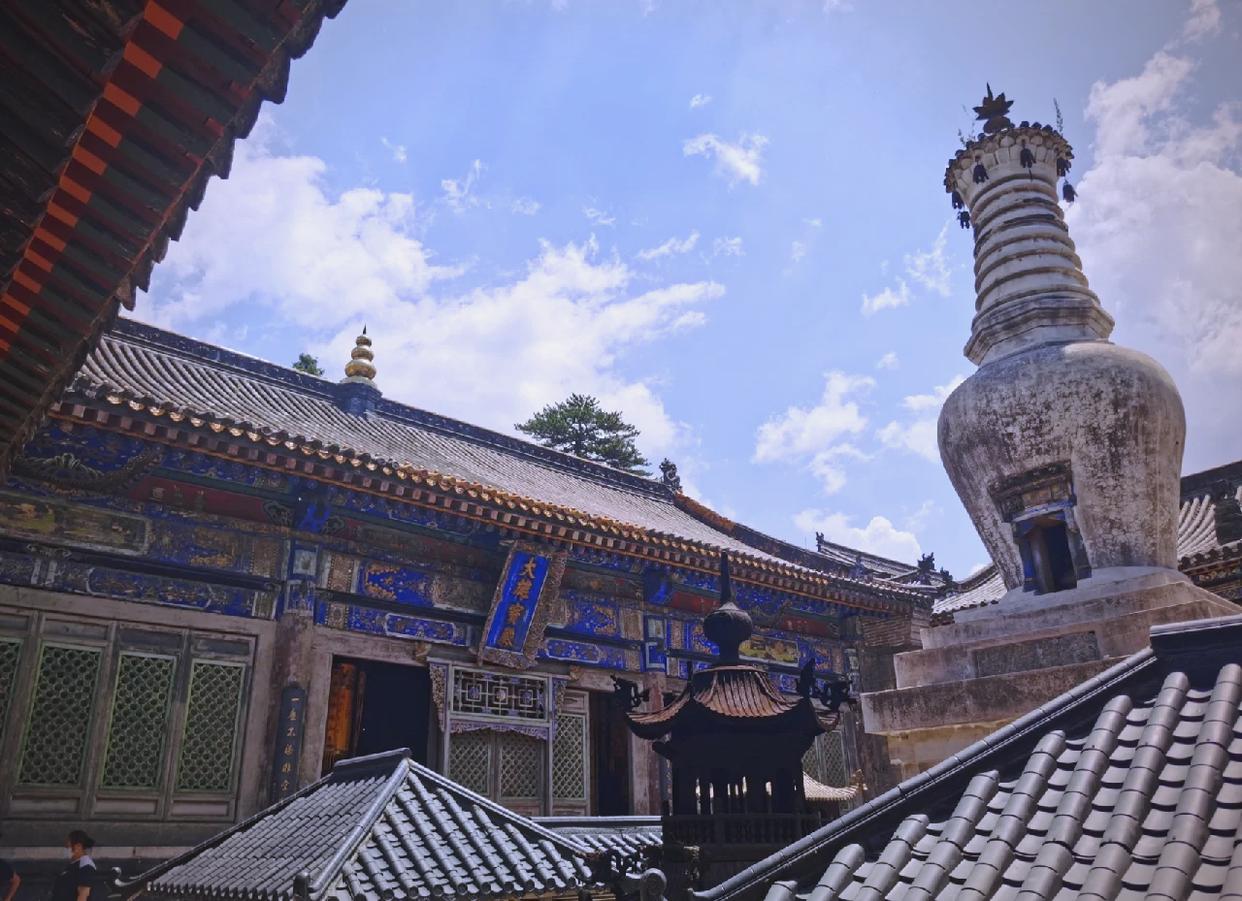
This sprawling complex is a masterpiece of stone carving. It’s known for its intricate details and seven-story layout. The craftsmanship here is breathtaking. It’s less crowded than the temples in Taihuai. This allows for a more peaceful and contemplative visit.
Special Experiences at Mount Wutai
To truly connect with the spirit of the mountain, we encourage you to go beyond simple sightseeing.
Attending a Morning or Evening Chant
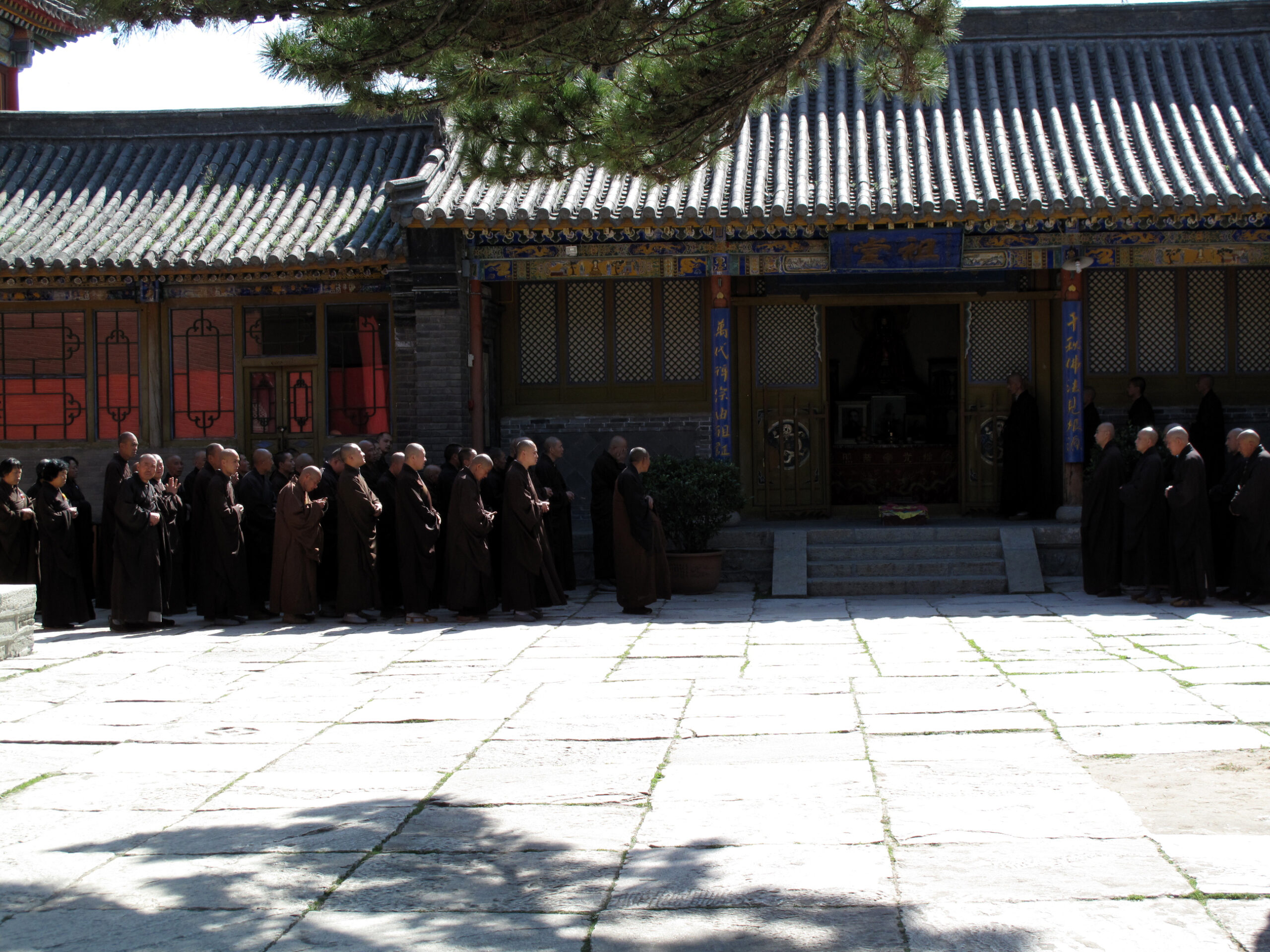
One of our most memorable experiences was attending the morning chants at a small monastery. Waking before dawn, we joined the monks in the main hall. The sound of their deep, resonant chanting filled the ancient space. It was a powerful start to the day. Most large temples have daily services that are open to respectful visitors. Ask your guide or the temple staff for the schedule.
Hiking a Section of a Pilgrimage Trail

You don’t need to complete the full Da Chaotai to experience the pilgrim’s path. A popular and manageable hike is the route between the North and Central terraces. The trail winds through high-altitude meadows. You will see grazing yaks and stunning wildflowers in the summer. It’s a chance to experience the mountain’s natural beauty and quiet solitude.
Savoring a Vegetarian Meal at a Monastery
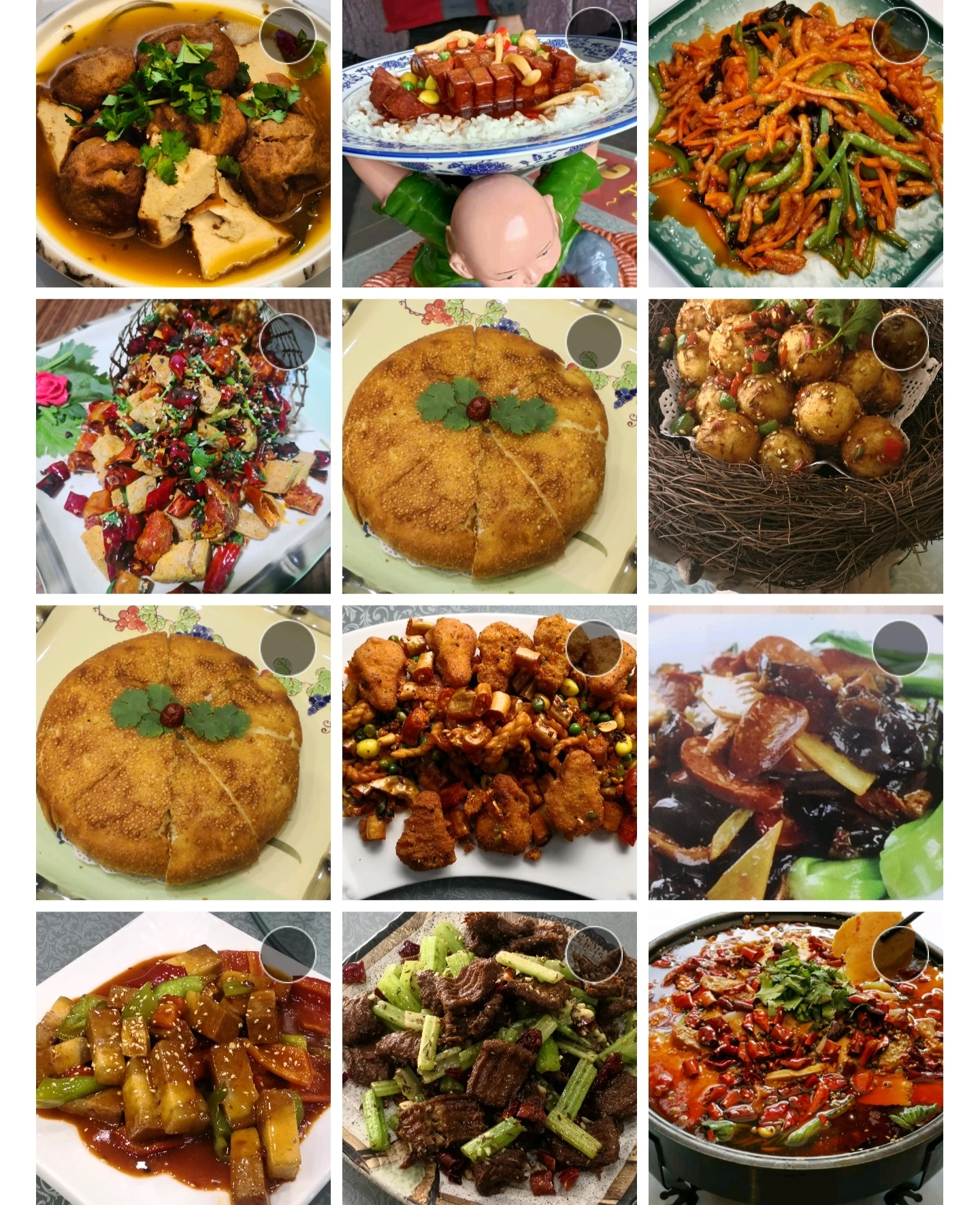
Many temples offer simple, delicious vegetarian meals to visitors. Eating alongside monks and pilgrims is a unique cultural experience. The food is often made with fresh, locally sourced ingredients. It’s not just a meal; it’s an exercise in mindfulness. Remember to finish everything on your plate, as wasting food is frowned upon in Buddhism.
How to Visit Mount Wutai

The mountain is vast, and navigating it can seem daunting. Here’s a breakdown of how to structure your visit.
For a 1-Day Trip (A Quick Glimpse)
If you are short on time, focus on the core area.
- Morning: Visit Tayuan Temple, Xiantong Temple, and climb the steps to Pusading.
- Afternoon: Visit Nanshan Temple for its intricate carvings and quieter atmosphere.This itinerary gives you a taste of the mountain’s essence.
For a 2-Day Trip (The Classic Experience)
This is the ideal duration for most first-time visitors.
- Day 1: Explore the temples in Taihuai Town (Tayuan, Xiantong, Pusading). In the afternoon, visit Dailuoding. You can take a cable car or climb over 1,000 steps to reach it. Visiting Dailuoding is considered a “Small Pilgrimage,” as it has statues representing the Manjushri of all five peaks.
- Day 2: Hire a car to visit one or two of the peaks. We recommend the South and West terraces for accessible and beautiful scenery. Alternatively, use this day to visit the historic Foguang Temple.
For a 3-Day+ Trip (The Pilgrim’s Journey)
With more time, you can immerse yourself fully.
- Days 1 & 2: Follow the 2-day itinerary.
- Day 3 (and 4): Embark on the Da Chaotai. Hike or take a vehicle to visit all five peaks. This is a profound spiritual and physical journey. It connects you to the mountain in a way that a simple visit cannot.
Best Time to Visit Mount Wutai
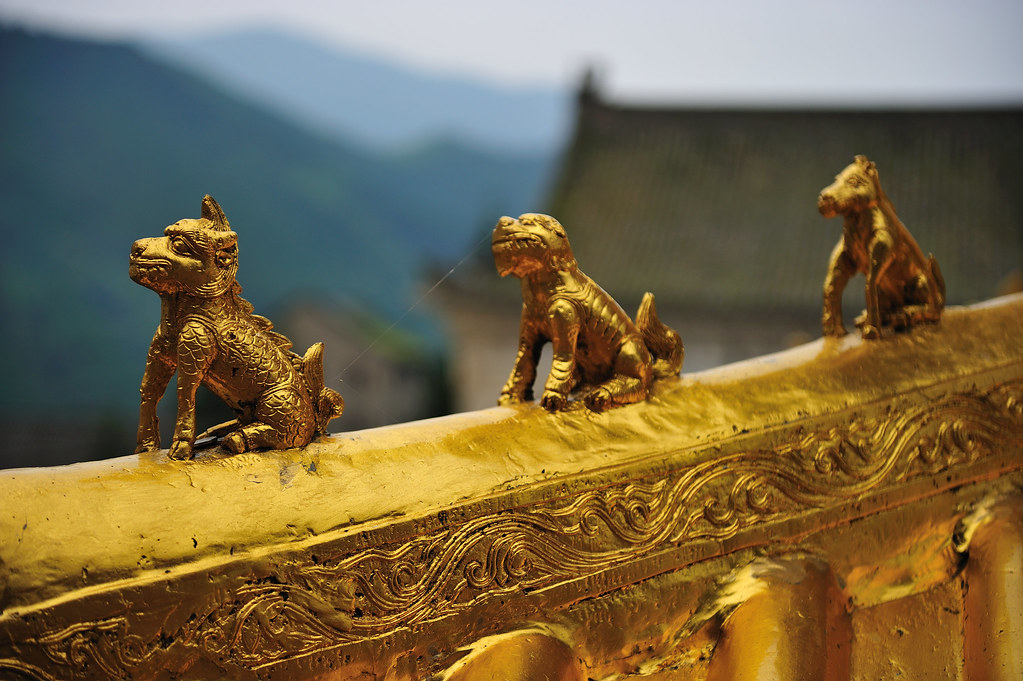
The best time to visit depends on what you seek.
- Summer (June to August): This is the peak season. The weather is pleasant, with average temperatures around 20°C (68°F). The mountain is lush and green. Wildflowers blanket the meadows on the peaks. However, it is also the most crowded and expensive time.
- Autumn (September to October): We believe this is the best time. The crowds thin out, and the weather is cool and clear. The autumn foliage paints the landscape in stunning shades of gold and red. The skies are often a brilliant blue, perfect for photography.
- Spring (April to May): A beautiful time when the ice melts and life returns to the mountain. It can still be quite cold, especially on the peaks. But you will be rewarded with fewer tourists and a sense of fresh beginnings.
- Winter (November to March): This is for the truly adventurous. The mountain is covered in a thick blanket of snow. It is incredibly serene and beautiful. However, temperatures can drop to -20°C (-4°F) or lower. Many guesthouses and restaurants may be closed. Visiting the high peaks can be dangerous and is often not possible.
Planning Your Visit: The Practical Details
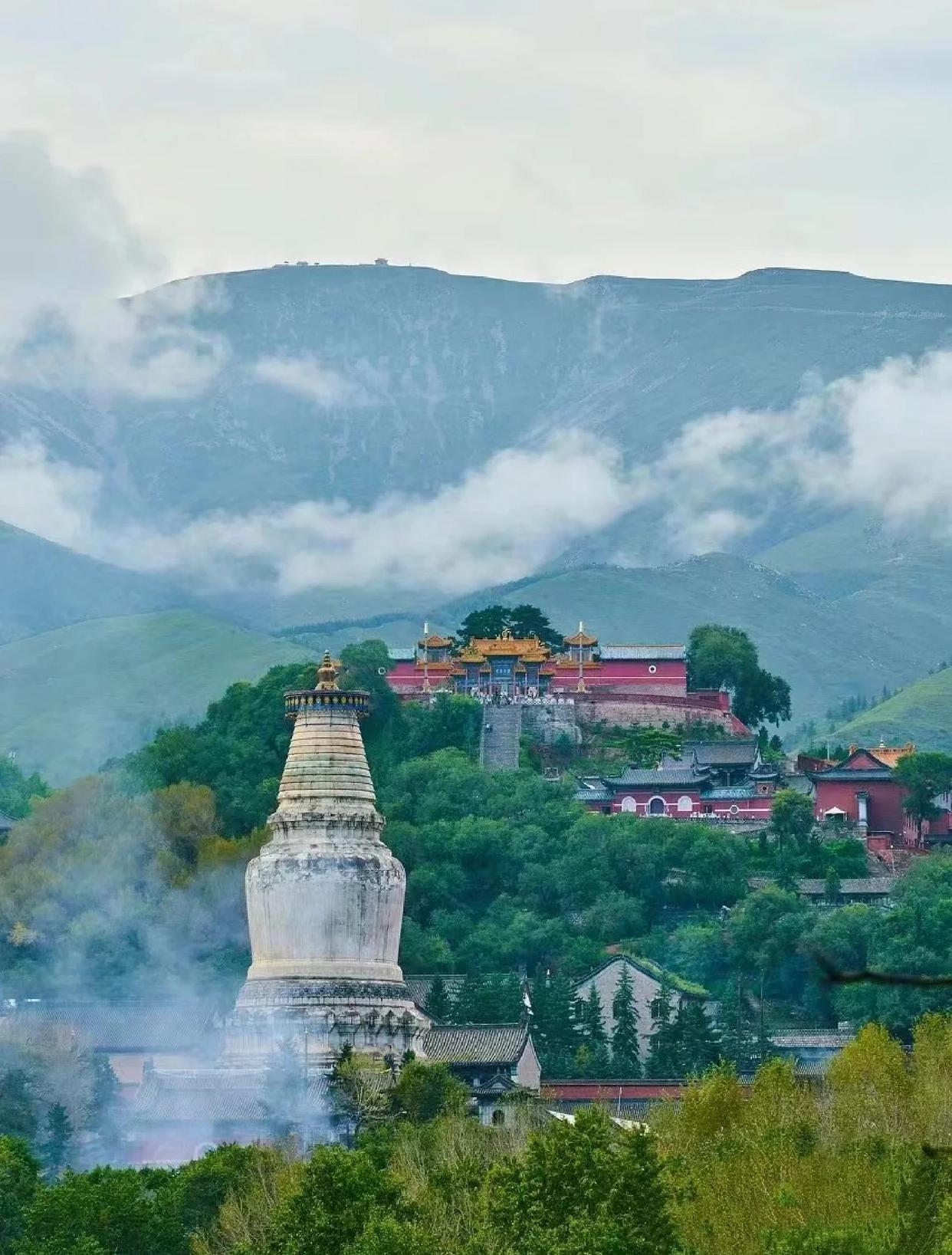
Here is the essential information you need to plan your logistics.
Getting There
Mount Wutai is in a relatively remote part of Shanxi province. There is no airport or railway station directly at the scenic area.
- By High-Speed Train: This is the most convenient option.
- Take a high-speed train to Wutaishan Railway Station (五台山站). This station is about 50 km (31 miles) from the main tourist area of Taihuai Town.
- From Beijing, the journey takes about 2-3 hours. From Taiyuan, it’s about 1.5 hours.
- From the station, you can take a bus or taxi to Taihuai Town (approx. 1-hour drive).
- By Bus: Direct buses run from major cities like Taiyuan, Datong, and Beijing. The journey can be long (e.g., 5-6 hours from Beijing) but is a budget-friendly option.
- By Private Car: Hiring a private car with a driver is the most comfortable and flexible way to travel. This is what we arrange for our guests at Travel China With Me. It allows you to travel at your own pace and visit remote temples like Foguang Temple easily.
Opening Hours and Tickets
Item | Details |
|---|---|
Scenic Area Entrance | Open 24 hours, but ticket office has operating hours (usually 6:30 AM – 6:30 PM). |
Peak Season Ticket | ¥168 per person (April 1 to October 31). Valid for several days. |
Off-Season Ticket | ¥140 per person (November 1 to March 31). |
Temple Entrance Fees | Most major temples within Taihuai Town require a separate small entrance fee (typically ¥5 – ¥10). |
Shuttle Bus | A mandatory shuttle bus system operates within the core scenic area. A pass costs ¥50 per person and is valid for your entire stay. |
Note: Prices are based on information available in late 2025 and are subject to change. We always verify the latest prices before our tours.
Practical Travel Tips from Our Experts
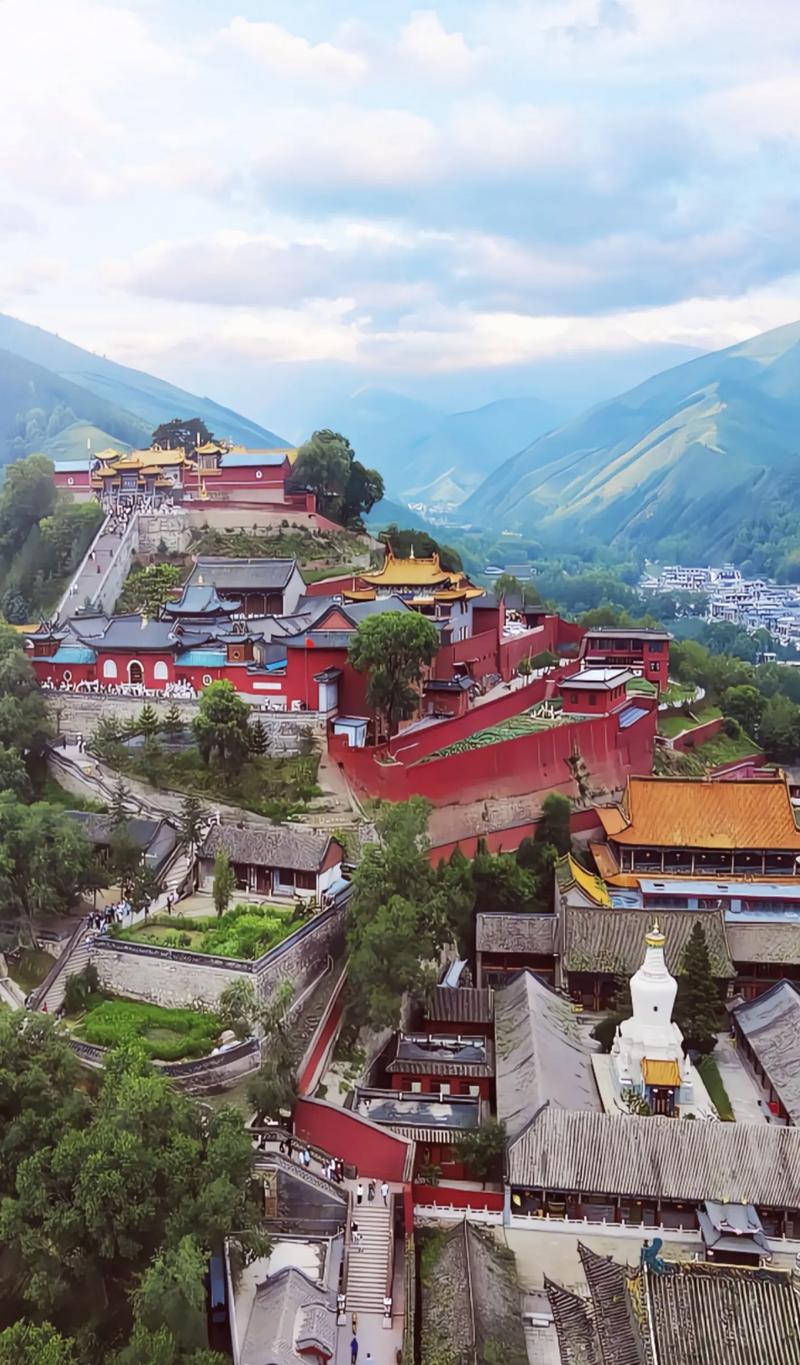
Having guided many travelers through Mount Wutai, we’ve gathered some essential tips.
- Dress in Layers: The weather on the mountain can change rapidly. Even in summer, the peaks can be cold and windy. Bring a warm jacket, comfortable walking shoes, and rain gear.
- Be Mindful of Altitude: Taihuai Town is at about 1,700 meters (5,577 ft), and the peaks exceed 3,000 meters. Most people won’t experience severe altitude sickness, but it’s wise to acclimatize. Walk slowly, drink plenty of water, and avoid strenuous activity on your first day.
- Respect the Culture: Remember, this is a sacred place of worship. Dress modestly (cover shoulders and knees). Do not take photos of monks without permission. Walk around stupas and prayer wheels in a clockwise direction. Speak softly within temple halls.
- Carry Cash: While mobile payments are common in China, many smaller temples, food stalls, and local guesthouses on the mountain still prefer cash.
- Stay Connected: Mobile signal can be weak or nonexistent in remote parts of the mountain, especially on the hiking trails between peaks. Download offline maps before you go.
Real Traveler Reviews
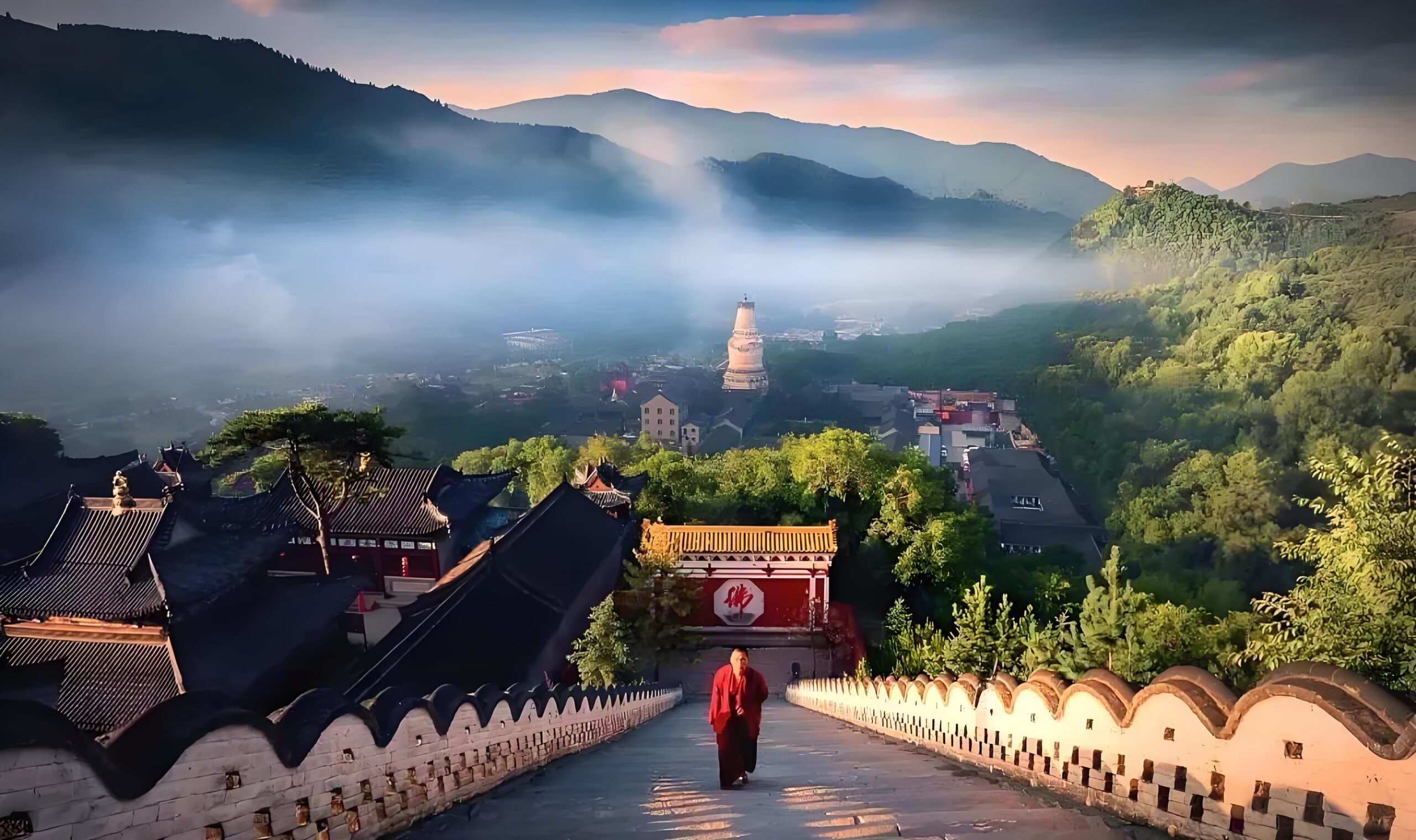
We believe in transparency. Here are some common sentiments we hear from our guests and see in online reviews:
“The sheer scale and number of temples are incredible. I loved the spiritual atmosphere, so different from other tourist sites in China. Pusading at sunset was a highlight.” – Sarah from the UK
“The hike between the North and Central peaks was challenging but so rewarding. The views were out of this world. Be prepared for the altitude and cold wind, even in July!” – Mark from Australia
“Hiring a local guide made all the difference. We learned so much about the history and symbolism that we would have missed otherwise. Foguang Temple was a humbling experience.” – David from the USA
Common challenges mentioned include the sometimes-confusing transportation system and the language barrier. This is where having a well-planned tour can greatly enhance your experience.
Frequently Asked Questions (FAQs)
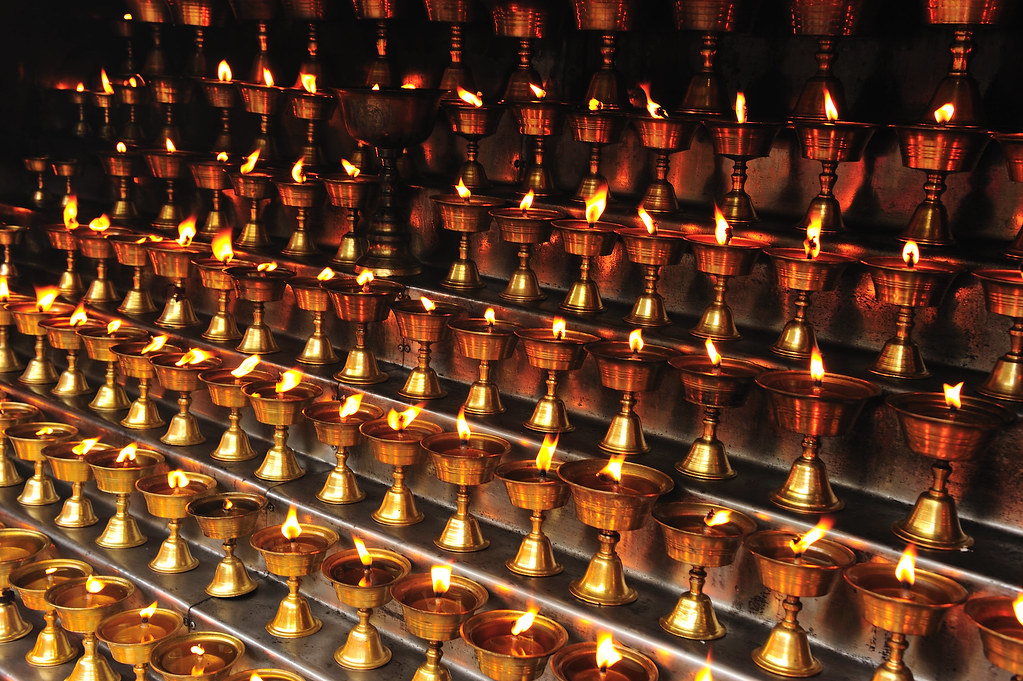
Q1: How many days are enough for Mount Wutai?
We recommend at least two full days. This allows you to explore the main temples in Taihuai Town and visit one or two of the peaks without rushing.
Q2: Is Mount Wutai suitable for family travel with children?
Yes, it can be. The main area of Taihuai Town is accessible. Children might enjoy the grandeur of the temples. However, the high altitude and extensive walking might be tiring for very young children. Hikes to the peaks are more suitable for older children and teenagers.
Q3: Do I need to be a Buddhist to visit or enjoy Mount Wutai?
Absolutely not. While it is a major pilgrimage site, visitors of all backgrounds are welcome. You can appreciate the mountain for its stunning scenery, incredible history, ancient architecture, and peaceful atmosphere.
Q4: What is the food like in Mount Wutai?
The local cuisine features many vegetarian dishes due to the Buddhist influence. You must try the local mushrooms and potato dishes. Taihuai Town has a range of restaurants, from simple noodle shops to more formal hotel dining rooms.
Q5: Is it safe to travel alone in Mount Wutai?
Yes, it is generally very safe. The main tourist areas are well-managed. However, if you plan to do extensive hiking, especially on the Da Chaotai, it is safer to go with a guide or a group.
A Personal Note From Our Team
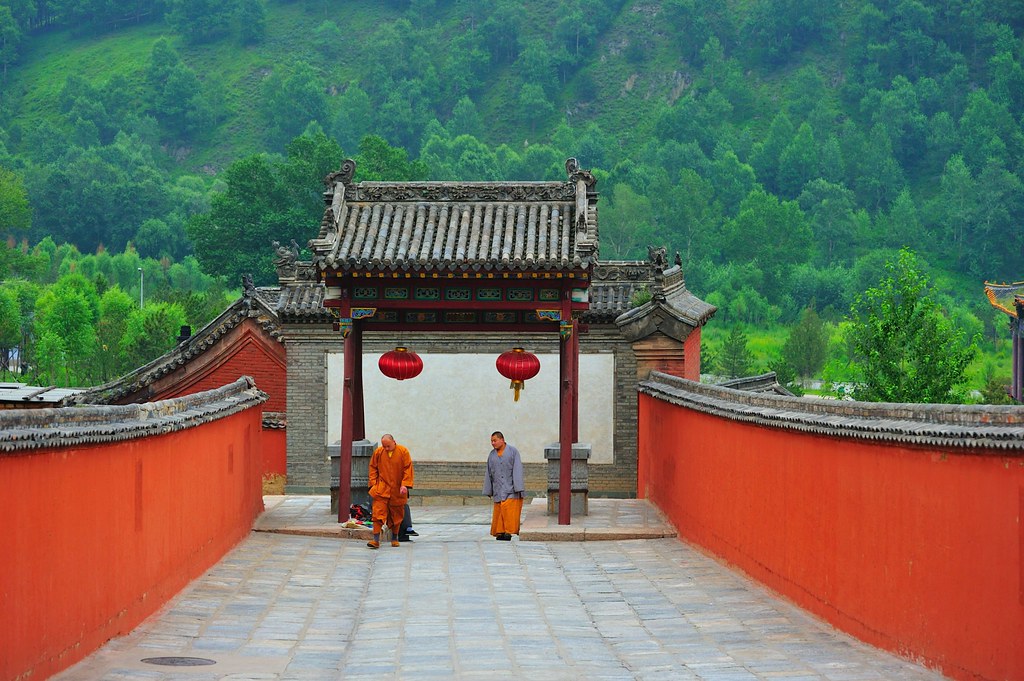
I’ll never forget my first time watching the sunrise from the East Terrace. The world was silent, except for the wind. As the sun crested the horizon, it cast a golden light over the sea of clouds below. The ancient temple beside me seemed to glow. In that moment, I understood why people have been coming here for 2,000 years. It’s a place that quiets the mind and opens the heart.
At Travel China With Me, our mission is to help you find moments like that. We design journeys that go beyond the checklist of sights. We want you to feel the pulse of this sacred mountain. We handle all the logistics—the transport, the tickets, the accommodation—so you can focus on the experience.
Whether you are a devout pilgrim or a curious traveler, Mount Wutai has something to offer you. It might be wisdom, peace, or simply a deeper connection to China’s rich cultural heritage. We would be honored to help you discover it.



